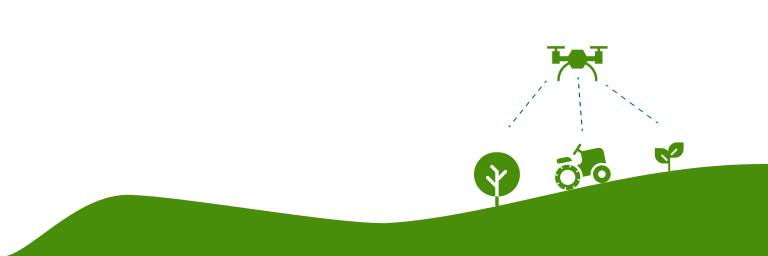Podcast Regenerative agriculture and no-till summary
Petya Ivanova, member of the Association of Bulgarian No-Tillers since its foundation, expert in conservation agriculture with a focus on research, development, and integration of the method in Regenerative agriculture and no-till Bulgarian farming.
Conservation agriculture is based on a set of principles. Is it mandatory that they are applied in parallel, or could it be sequential?
This type of production is a system just like the conventional agriculture which is also a system. Just as we cannot skip an operation in conventional agriculture, in order to achieve the result of regeneration, restoration of the soil and an instigate regeneration processes in the entire ecosystem, we must apply the entire set of principles. Naturally when a farmer or a farm embarks on a transition from conventional to conservation agriculture there is a process of adaptation and not everything will be perfect since day one. Yet, the least that they can do is combine the three main principles together or it won’t work. This means minimum soil disturbance, keep the soil covered at any time – something that is often underestimated and create diversity and live roots, i.e., diversity in the form of rotation, plant diversity and with the help of cover crops biodiversity as well. There is also the principle of maximum photosynthesis and maintenance of live roots for the longest time possible. Then already the farmer can start thinking about some steps for reduction in the use of agrichemicals and what else he ought to do so that his or her system will decrease its need for them. We have discussed that integrating animals is something that depends heavily on the context, on the manner of production. It is not a must and cannot be done everywhere to practice conservation agriculture, but it is part of the principles because by integrating the animals we can control the negative imprint of livestock farming and transform it from a problem into a solution.
Is regenerative agriculture equal to no till?
My immediate answer will be no, but I will add that in fact they can be. There are many places in the world, such as USA for example where conservation agriculture originated, where the two practically equal. We should look not so much at the concept but at its content – what activities it contains and what the farmer who implements it actually does. In the US the pioneers who are also the leaders, let’s say in grain production and those who practice pasture livestock farming, conservation pasture, and for grain producers no till means conservation because their lead criterion is soil health. Their main purpose is to restore the soil and recover the ecosystem. However, no till is very often interpreted literally with the belief that it boils down to direct seeding. In fact, there are places where everything ends there. Let’s say in Argentina as a long-term example where direct seeding is applied but that is not conservation agriculture per se. Tilling there is not practiced for purely economic reasons. It is true that when we stop tilling, the soil erosion diminishes but we don’t stimulate the regeneration processes and do not move ahead with recovering the soil health. Where only direct seeding is practiced, not all the benefits of conservation agriculture can be gained, and the system becomes dependent on herbicides. So, these are two very different things. With just direct seeding we cannot solve the problem of diseases and pests and the entire conventional agri-chemistry will remain on the field. While in conservation agriculture they can be eliminated to a maximum with every step we take.
How does conservation agriculture handle weeds and insects?
Let’s start with the insects, some of the insects in nature we define as pests. Those are insects whose larvae damage the plants or the insects themselves do it. Insects are actually nature’s sanitarians; they are the rubbish cleaners. And they are also a signal, an indicator of poor plant health and gaps in the synthesis of the plant physiology. In conservation agriculture we address the root causes. In fact, I would say that we don’t fight the adversaries, we manage them in a way, mostly in order to focus the attention on the root cause that leads to economic damages from the pests and eliminate it. So here we need to separate things, I mean diseases and pests and insects and weeds. The same principle applies to weeds but with certain differences. Conservation agriculture does not fight weeds directly, that is if we have weeds, we must destroy them one way or another. We look for the root cause for weeds to appear and try to eliminate it. I want to share something that derives from the ecosystem principles: soil develops as an ecosystem; it has its evolution and I do not mean the soil formation process but the evolution of the microbiological ecosystem inside the soil. The microbiological ecosystem inside the soil and its development is directly bound with the plant species. Oftentimes weeds are an indicator of soil problems. What we have achieved with years of conservation practice is that the aggressive weeds reduce. The question remains that we need to regulate the vegetation to make room for the crops we want to produce but the soil conditions change and with it weeds find less favourable conditions, meaning we create soil conditions for nobler plants. Bottom line it is complex, but solutions exist, and we should talk about management rather than fight.
Why is conservation farming less popular in Europe than on other continents?
I do not have a categorical answer to this question. My impression is that Europe is conservative in many ways and not only in agriculture. In agriculture in particular it is also heavily subsidized and in general Europe’s overall policy has a strong influence creating a buffer to the unfavourable conditions, which are increasing in Europe just as anywhere else. This trend is not likely to reverse. In many places where draughts did not exist earlier, and farmers functioned normally with regular rainfalls and drying the soil with tillage did not use to be a problem it is already. I am talking about the northwestern parts but here as well the climate is changing, although at a slower pace.
Does science have a contribution to conservation agriculture?
In general, or in Bulgaria?
Both.
Science in general has a huge contribution, of course. Something very interesting here is that we have abundant information about the soil as a system and about the ecosystem principles. The new element is that they are now being integrated into the agricultural production and thus penetrating the agriscience and upgrading it. It is important to underscore here that in conservation agriculture we talk about effective production and the environment is not really central. It is just the means we use to achieve our goals. So yes, science needs to catch up because it has gone too far into the chemical aspect and into solving all kinds of problems with some products. While what we do is to apply ecosystem principles, integrate ecosystem principles because agriculture is practiced in nature after all. We must have missed that before or it was not in the focus of attention, but agriculture happens in nature, it is an open-air factory that is subject to the laws of nature. And the laws of nature are not at all unpredictable, just the opposite, nature has its creative mechanisms. Science has already explained them well; it explains the phenomena that conservation farmers are using in their fields. Perhaps we should make the agri-knowledge even more interdisciplinary to be able to reflect this type of agriculture, I mean here in Bulgaria.


